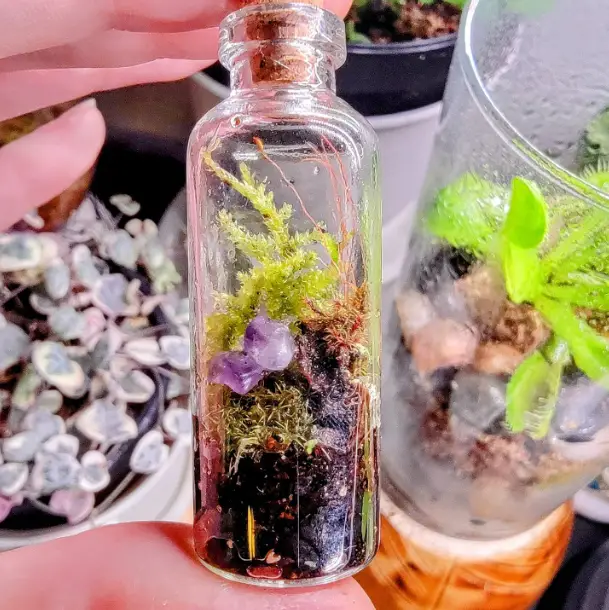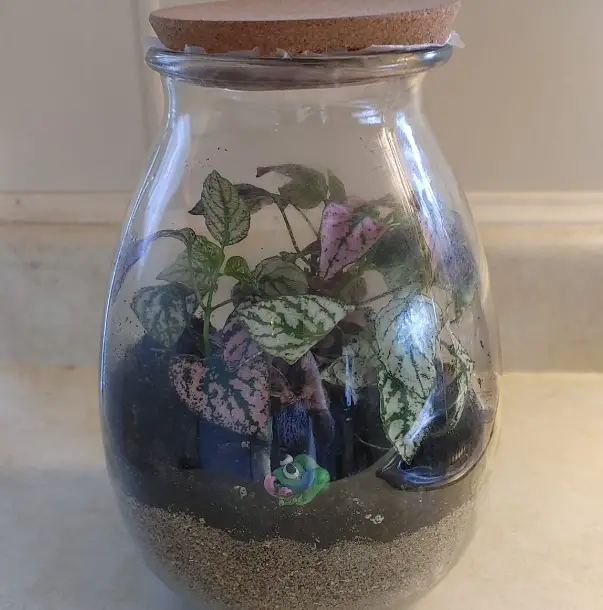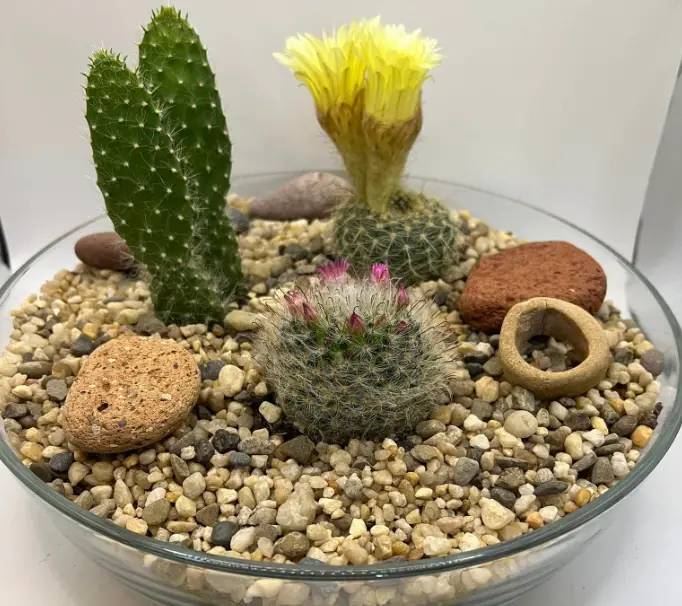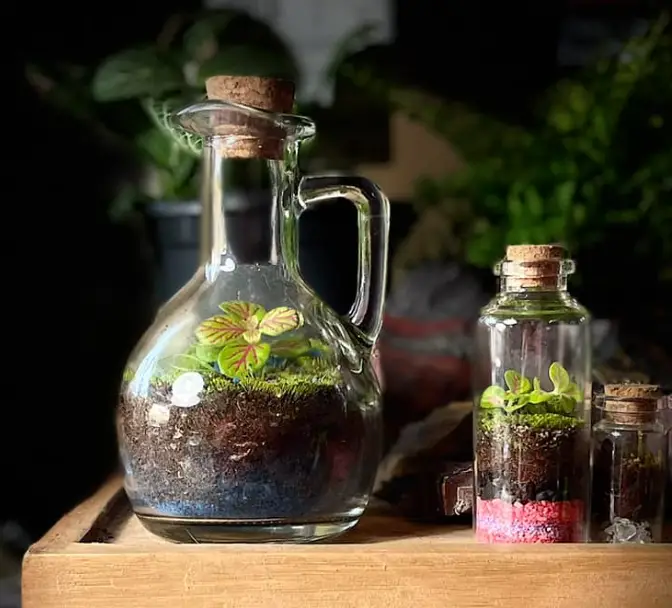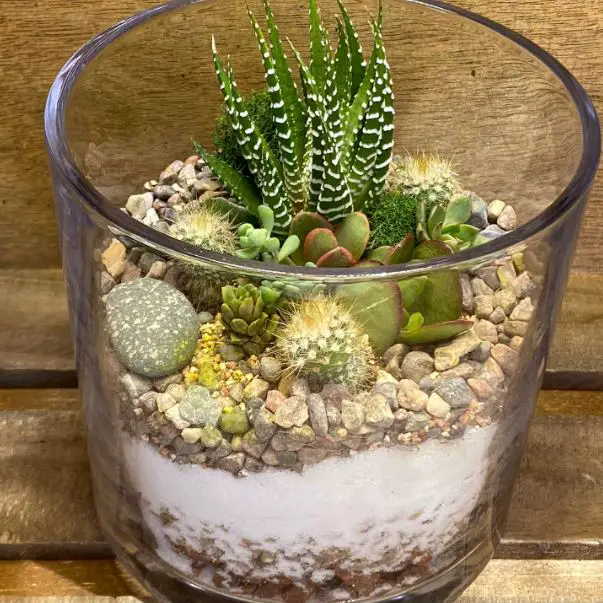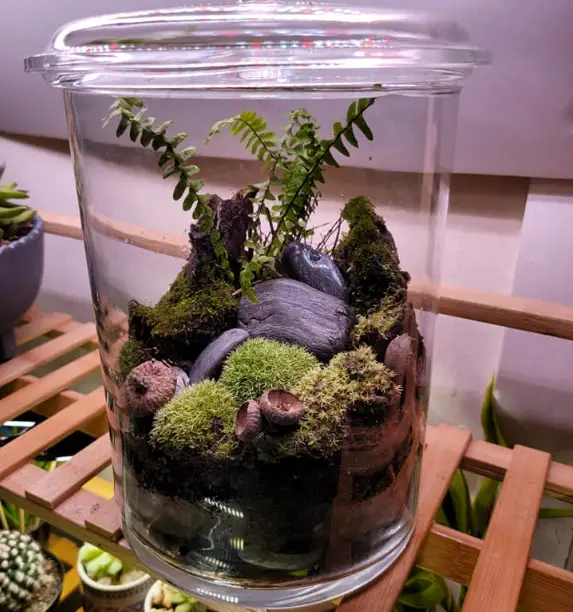Mold in the Terrarium – Causes, Signs and Fixes
The growth of mold in your terrarium is not just unhealthy for your plants but also a risk to your family members. Mold produces spores and other airborne toxins which may cause allergic reactions when inhaled. In this guide, I’ll explain what causes mold in the terrarium, its signs, and how to get rid of it.
Mold thrives in damp, dark, and humid conditions. Overwatering your terrarium or not allowing proper airflow can lead to excessive buildup of moisture thus creating an ideal breeding ground for mold. Dead and decaying plant matter in the terrarium can be a food source for mold.
Poor lighting, overcrowding plants in your terrarium, and neglecting regular maintenance practices such as cleaning and pruning can also contribute to mold growth. Most people assume that terrariums will largely look after themselves and I found it incorrect.
Mold hardly grows in my cactus terrarium since it’s open and I hardly overwater my plants. But it is a common problem in my closed terrarium containing other succulents. However, I have figured out how to deal with this mold issue and it’s no longer a threat to my plants and family.
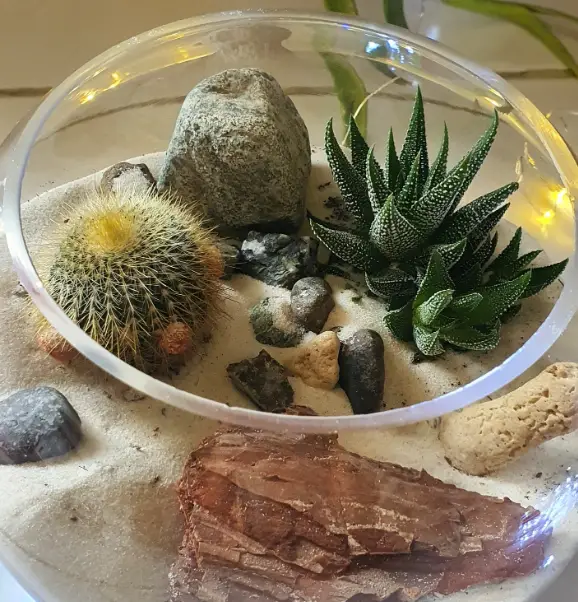
Signs of mold in the terrarium
Given proper conditions, mold will start to grow on surfaces within 24 to 48 hours. If you haven’t seen mold before, it can take you time to realize that all is not well. There are several signs that may indicate the presence of mold in your terrarium. They include the following:
Fuzzy or powdery growth
Mold often appears as a fuzzy or powdery substance on the surfaces of the plants, soil, or other organic materials within the terrarium. It can be white, green, black, or even different colors depending on the type of mold.
Musty or unpleasant odor
Mold typically produces a distinct musty smell. If you notice a strong, unpleasant odor coming from your terrarium, it could be an indication of mold growth. In some cases, the musty smell can be a sign of root rot common in cacti and other succulents.
Appearance change
Mold can cause plant leaves or stems to become discolored, wilted, or slimy. It can also affect the appearance of your terrarium walls making them have a greenish or blackish tint. Fuzzy mold in houseplant soil will also make the terrarium look ugly.
Reduced plant health
The growth of mold in the terrarium can have a negative impact on the overall health of the plants. Typically it causes a decline in plant vigor, stunted growth, and deformation of leaves and stems.
How to fix mold problems in the terrarium
If you have mold growing in your terrarium, here are some steps you can take to save your plants.
- Start by identifying the cause of mold in your terrarium. As said, mold thrives in places with excessive levels of moisture. Overwatering, poor ventilation, and constantly sealed container are the main factors that may contribute to high humidity levels in your terrarium.
- If the mold is limited to certain parts in the terrarium then remove all the affected material and dispose of them. This could include dead plant matter, decaying organic materials, or contaminated soil.
- Make sure you’re not overwatering your plants and that there is a proper flow of air in the terrarium. Allow the soil to dry out slightly between watering and occasionally open your terrarium if it’s a sealed container.
- If the mold problem persists, remove the plants and thoroughly clean the terrarium. Use a mixture of water and mild dish soap to clean the jar or container and rinse it well to remove all the soap residue.
- You may also need to remove the soil from the container and sterilize it before reusing it. Bake the soil in an oven at around 180°F (82°C) for 30 minutes and let it cool completely. This will help kill off any mold spores or other pathogens in the soil.
- You can also introduce beneficial organisms like isopods or springtails into the terrarium which can help in keeping the ecosystem at balance.
- Regularly monitor your terrarium for any signs of mold regrowth and treat it as needed. You may use a natural fungicide or repot the plant in a new soil mix to completely fix the mold issues on your houseplants.
Remember that proper plant care is key in preventing the growth of mold in your terrarium. Ensure you are maintaining proper airflow, appropriate humidity levels, balanced watering, and adequate light for the plants in your terrarium.
Final Thought
Several factors can contribute to the growth of fungi in a terrarium. This includes excessive moisture, poor ventilation, lack of enough sunlight, presence of contaminated materials, overcrowding, and improper maintenance of your plants.
By addressing these factors and creating a balanced environment with proper moisture levels, ventilation, light, and cleanliness, you can significantly reduce the risk of mold growth in your terrarium. If nothing helps, you can seek the help of a plant specialist.
References
Creating a Garden in a Terrarium – The University of Vermont
Moldy Potting Mix – Michigan State University
Terrarium Tales – Johnson County Community
My name is Diane M Lewik, and I am the founder of this website. I am a degree holder in plant biology from the University of California – Berkeley. Over the years, I have cultivated a vast collection of succulents and I have learned a great deal about how to grow and care for these unique plants. Feel free to ask any questions in the comment section below.
